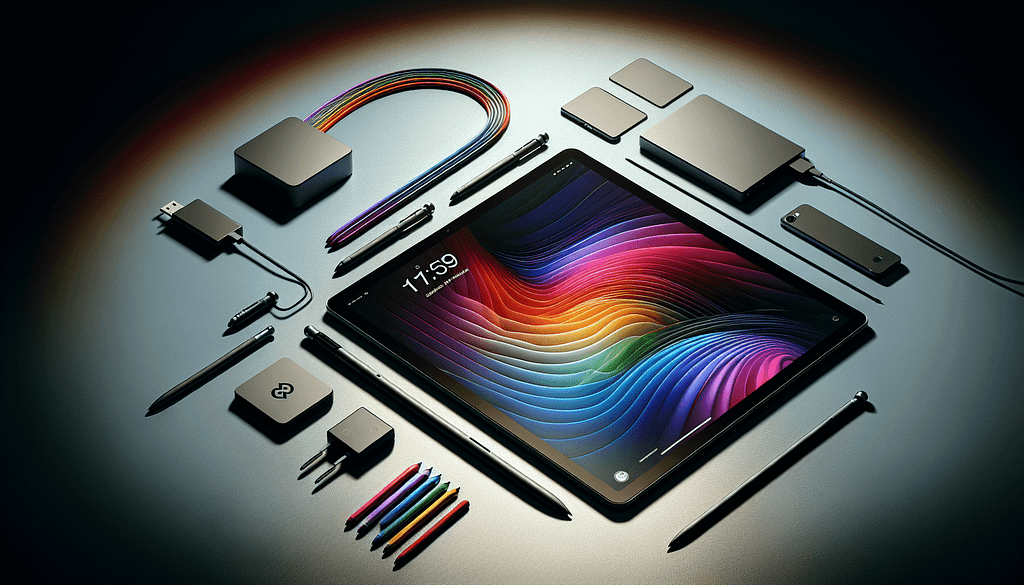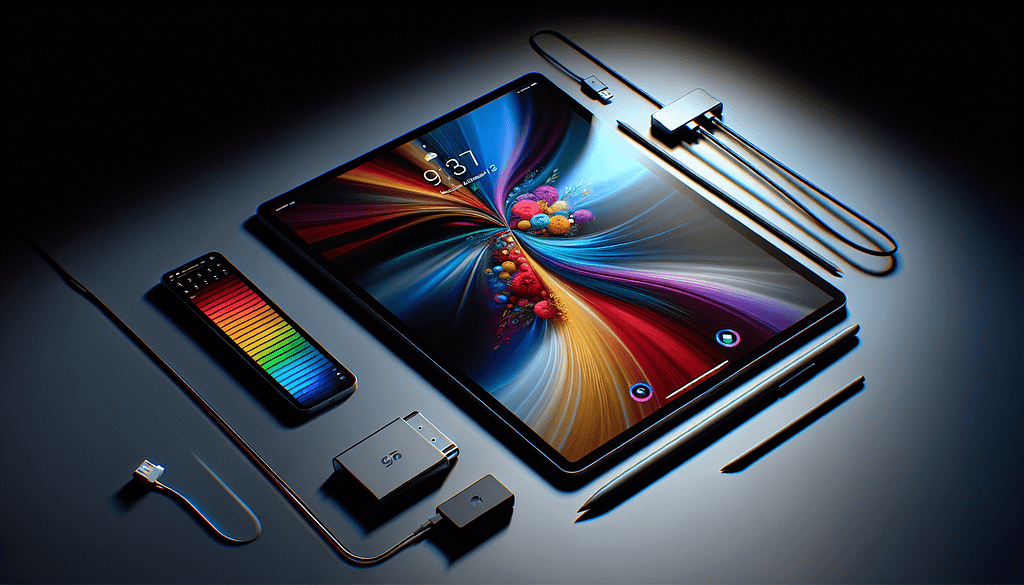How To Boost The Performance Of Your IPad Pro 12.9
Unlock the full potential of your iPad Pro 12.9 with our essential tips! From software updates to optimizing storage, enhance your device’s performance today.
How To Boost The Performance Of Your iPad Pro 12.9
Your iPad Pro 12.9 is a powerful device that is designed to handle everything from productivity tasks to creative endeavors. However, as with any tech gadget, it can sometimes benefit from a performance boost, especially if you want to keep it running smoothly for years to come. In this article, we’ll explore various methods you can employ to enhance the performance of your iPad Pro, ensuring that it stays as responsive and capable as the day you brought it home.
Understand How Your iPad Works
Before diving into specific performance tips, it’s important to understand how your iPad Pro operates. Apple has designed the iPad with a sophisticated architecture that optimizes both hardware and software for an intuitive user experience. The operating system, iPadOS, manages resources like memory, processing power, and battery life. Understanding this fundamental aspect will help you implement changes more effectively, allowing for a smoother and more efficient experience.
Learn About the Hardware
At the heart of your iPad Pro lies powerful hardware, including the M1 or M2 chip (depending on your model), a high-resolution Liquid Retina display, and an incredibly fast SSD. Upgrading or modifying hardware isn’t possible, but you can manage the software and settings to harness this power more effectively. This is where knowing your device’s capabilities will help you maximize its potential.
Regular Software Updates
One of the simplest yet most effective ways to boost the performance of your iPad Pro is to keep the software updated. Apple frequently releases updates to iPadOS that include important bug fixes, security enhancements, and performance improvements. To ensure your iPad is running the latest software, go to Settings > General > Software Update. Here, you can promptly download and install any available updates.
Benefits of Software Updates
Regularly updating your iPad ensures that you have the latest features and optimizations that Apple has integrated into the OS. This not only improves performance but also helps keep your device secure from vulnerabilities. Additionally, newer software often comes with enhancements that can lead to a more efficient use of battery and system resources, making it essential to prioritize updates.
Optimize Storage Space
Clearing up storage space is one of the most effective ways to improve your iPad’s performance. When your device’s storage is near capacity, it can lead to sluggish behavior and slower load times. You can check your iPad’s storage by going to Settings > General > iPad Storage. Here, you’ll see a breakdown of how much space is available and what is taking up most of the storage.
Manage Apps and Files
Review the apps you have installed and consider removing any that you no longer use. Deleting unused apps frees up vital storage space and can improve overall performance. Additionally, take a moment to clean up your files, such as photos, videos, and documents. Moving older files to cloud storage solutions like iCloud, Google Drive, or Dropbox ensures you maintain access without taking up local space.
Close Background Apps
Your iPad Pro is designed to multitask, but having multiple apps running in the background can consume resources. You might not think twice about switching between different applications, but each app can continue to use system memory and processing power even when you aren’t actively using them.
How to Close Apps
To help your iPad run better, take a few seconds to close background apps when you’re done using them. Swipe up from the bottom of the screen and hold, then swipe away any apps you want to close. It’s a small habit that can lead to a more fluid experience while using your iPad, particularly when switching between demanding applications.

Disable Unused Features
Your iPad Pro comes packed with a plethora of features, not all of which you may use. Disabling unused features can streamline performance and help conserve battery life. Features such as the Live Wallpapers, background app refresh, or location services for non-essential apps can drain resources unnoticed.
Adjust Settings
To turn off background app refresh, navigate to Settings > General > Background App Refresh and toggle it off for apps that you don’t need to be continuously updated. Similarly, you can manage location services in Settings > Privacy > Location Services. Switching off irrelevant location tracking for apps can reduce battery consumption and improve performance.
Clear Safari Cache
If you frequently use Safari for browsing, you may notice that it can become sluggish over time due to accumulated cache and history. Clearing the cache can lead to faster browsing and improved overall performance of the web browser.
How to Clear the Cache
To clear your cache, go to Settings > Safari and scroll down to Clear History and Website Data. This action won’t just help speed up Safari but may also reclaim some storage space, allowing your iPad Pro to breathe a little easier.
Enable Reduce Transparency
While the aesthetic of iPadOS is beautifully designed, the visual effects can sometimes slow down your device, especially when using older apps or multitasking heavily. Enabling “Reduce Transparency” can lead to a more responsive interface.
How to Enable the Setting
You can find this option under Settings > Accessibility > Motion. By toggling the Reduce Transparency feature on, you may notice that your iPad performs quicker, as it’s using fewer resources to render complex visual effects.
Use Low Data Mode
If you’re looking to improve performance, especially while using cellular data, Low Data Mode can reduce the amount of background data your apps use, which might help in some situations.
Activating Low Data Mode
You can activate this feature by going to Settings > Cellular > Cellular Data Options and toggling on Low Data Mode. While it’s primarily aimed at preserving data on a cellular plan, it can also help free up network resources, aiding in performance for streaming or data-heavy tasks.

Restart Your Device
Sometimes, the simplest solutions offer the best results. Regularly restarting your device can clear temporary files, refresh memory usage, and fix minor glitches that may be slowing down your experience.
Best Practices for Restarting
To restart your iPad Pro, simply press and hold the power button until you see the slider that prompts you to power off. After it shuts down, wait a few seconds before turning it back on. It’s often surprising how much smoother your device will feel after a restart, particularly if you haven’t done it in a while.
How To Boost The Performance Of Your IPad Pro 12.9
Limit Widgets
While widgets add a level of convenience to your home screen, having too many of them can also bog down performance. Some widgets frequently refresh their content in the background, leading to increased resource usage and potential slowdowns.
Choosing Your Widgets Wisely
Evaluate the widgets you have placed on your home screen and consider removing any that you rarely use or don’t find particularly helpful. You can do this by tapping and holding on the widget until the option to remove it appears. Limiting the number of active widgets can lead to a quicker, more streamlined experience on your iPad Pro.
Manage Notifications
Constant notifications can disrupt your workflow and contribute to a cluttered experience. Managing these notifications can have a positive impact not only on battery life but also on overall performance.
How to Manage Notifications
Head over to Settings > Notifications to customize how you receive alerts from various apps. You can turn off notifications for certain applications or adjust the alert style to your preference. Streamlining notifications can lead to a more focused experience, helping your iPad operate more smoothly.
Uninstall Unused Apps
Often, we download apps only to find that we don’t use them as frequently as we thought. These apps can accumulate over time, taking up storage space and potentially impacting performance.
Steps to Uninstall
To uninstall an app, simply press and hold its icon until the options appear, then select “Remove App” or “Delete App.” This quick process can free up valuable space as well as ensure that your iPad isn’t running unnecessary background processes related to those apps.
Keep Your iPad Clean
Occasionally, the iPad may suffer from physical obstructions preventing it from functioning properly. Dirty ports, a covered camera, or even dust on the screen could be influencing performance, especially if overheating occurs when the device is in use.
Cleaning Practices
To give your iPad Pro a thorough clean, use a microfiber cloth to wipe down the screen and body. For any ports or speakers, a can of compressed air can be effective in removing dust and debris. Avoid using any liquid cleaners directly on the device to prevent damage.
Extend Battery Life
Ensuring your iPad Pro has longevity in both performance and battery life can make a noticeable difference in everyday usability. Certain battery-saving settings can allow you to enjoy the device longer while keeping it running smoothly.
Enable Battery Saving Features
Explore Settings > Battery for options to enable Low Power Mode. This feature reduces background activity like mail fetch, visual effects, and even some app refresh rates. By enabling it during demanding scenarios or when battery levels are low, you can help extend your iPad’s overall performance.
Reset All Settings
If you’ve tried various strategies and are still facing performance issues, you may want to consider resetting all your settings. This action will restore settings to their defaults without deleting your data, such as apps and files.
Steps to Reset Settings
Navigate to Settings > General > Transfer or Reset iPad > Reset and select Reset All Settings. Although it’s a bit of a hassle to readjust everything afterward, this could potentially solve lingering performance issues.
Seek Professional Help
If none of these methods seem to work, it might be worth reaching out for professional assistance. Sometimes, hardware issues can manifest as performance problems, and taking your iPad to an Apple Store or authorized repair center for diagnostics can identify the issue.
Last Resort
While it may feel intimidating, professional help can often uncover necessary repairs or adjustments that you might not have had the tools or knowledge to fix on your own. Remember, your iPad Pro is an investment, and ensuring its longevity through expert assistance is sometimes key to maintaining its performance.
Conclusion
Your iPad Pro 12.9 is a fantastic device that can serve many purposes, from creativity to productivity. By implementing these tips and tricks, you can significantly enhance its performance, making it a reliable companion for your daily needs. Remember to keep your device updated, manage your storage wisely, and maintain a clean environment, both physically and digitally.
If you found this article helpful, don’t hesitate to clap, leave a comment, and subscribe to my Medium newsletter for future updates. Your engagement keeps us going, and I look forward to sharing more insights with you!
from Stories by Casenixx Phone Cases on Medium https://ift.tt/fJDC5VR
via IFTTT
Comments
Post a Comment